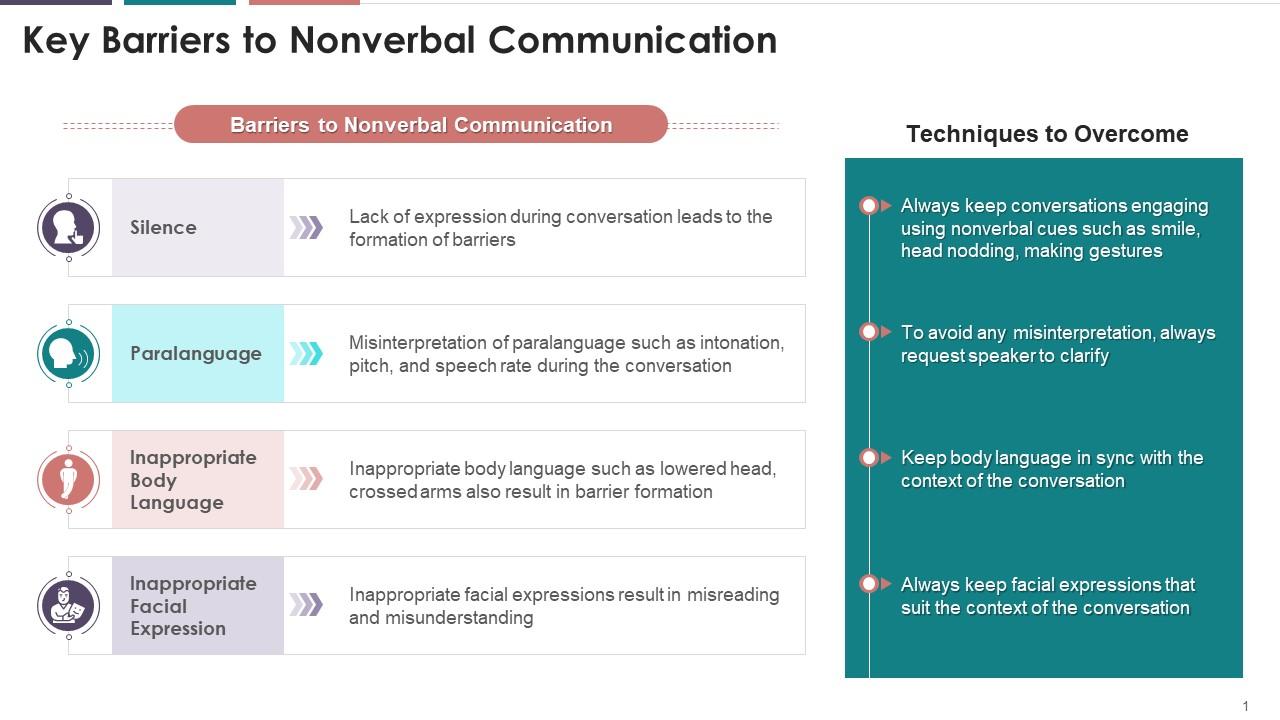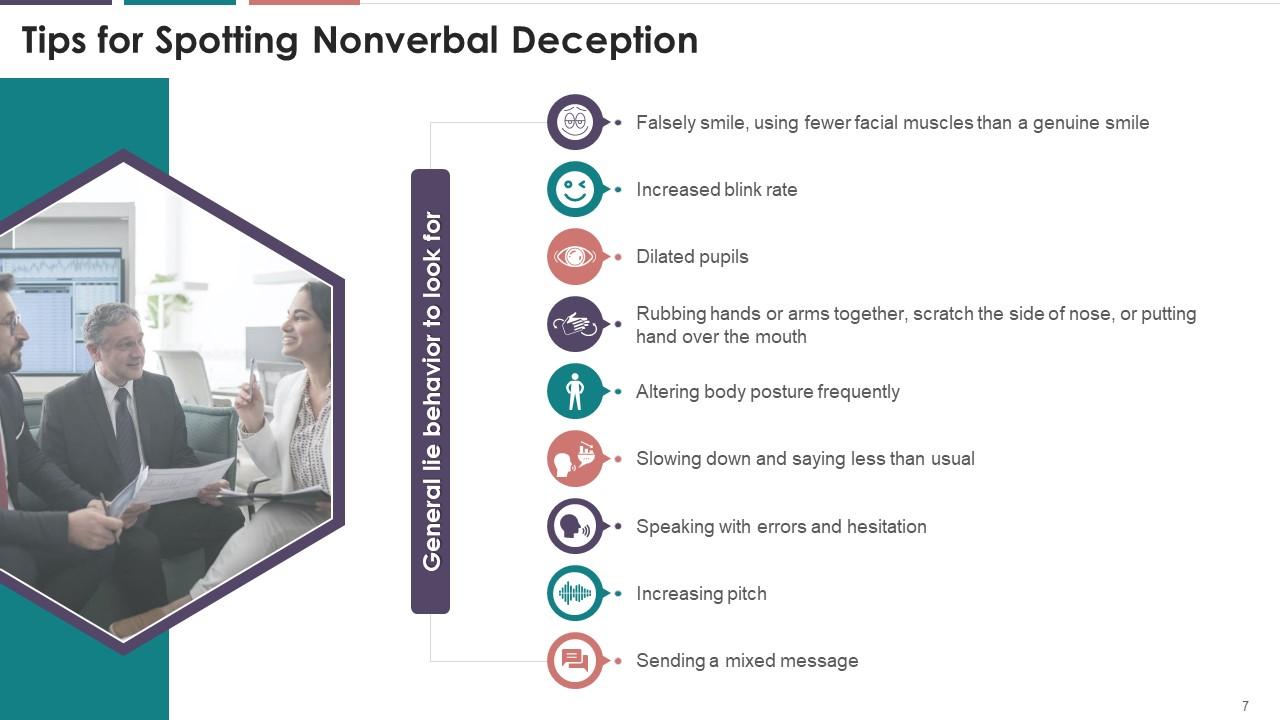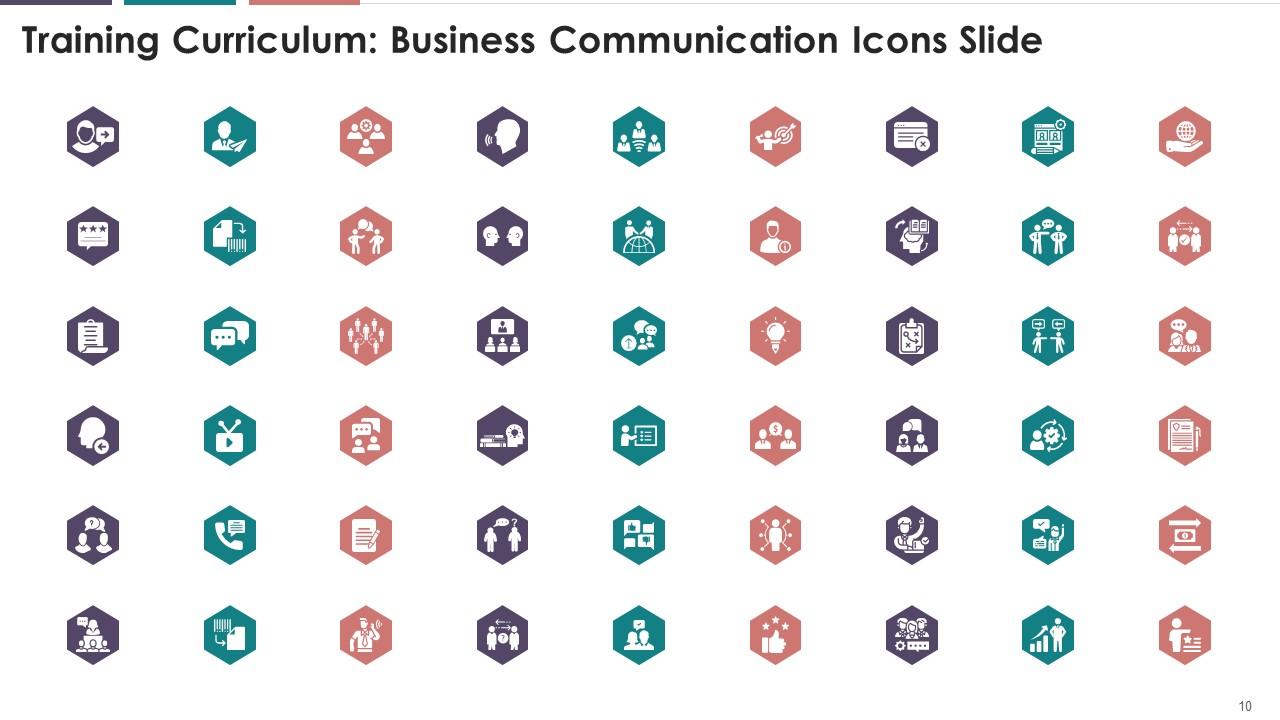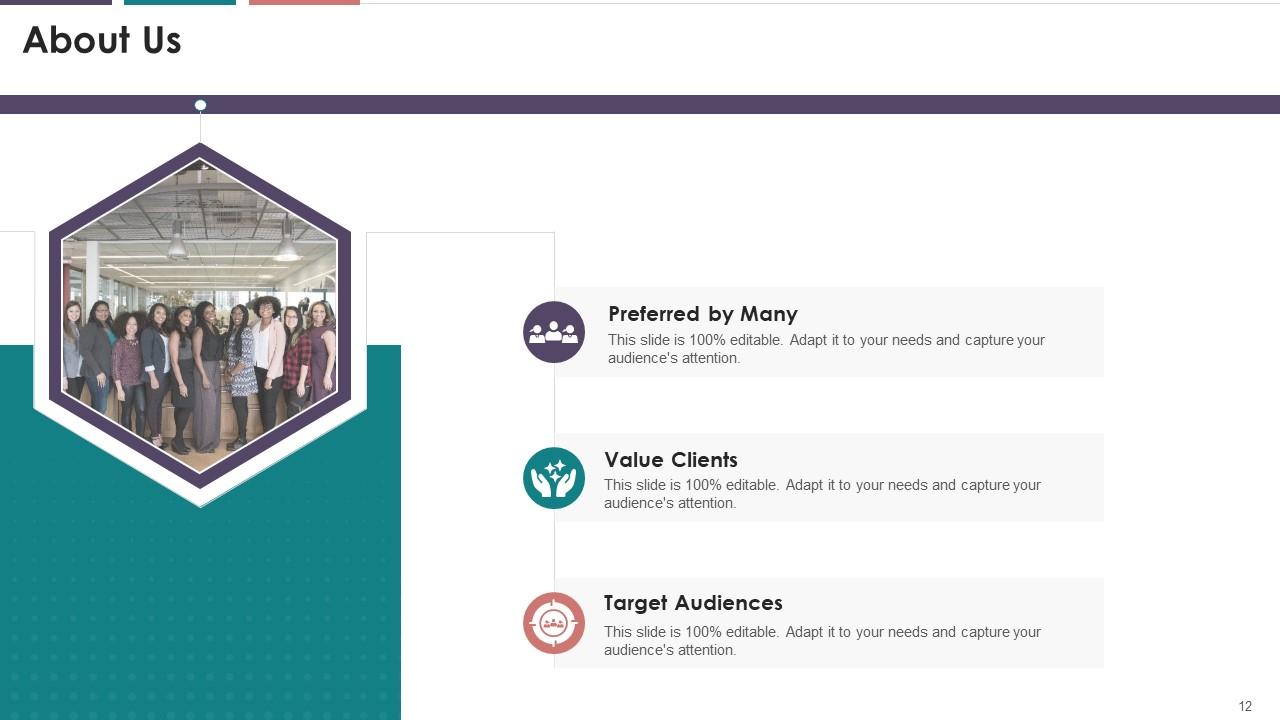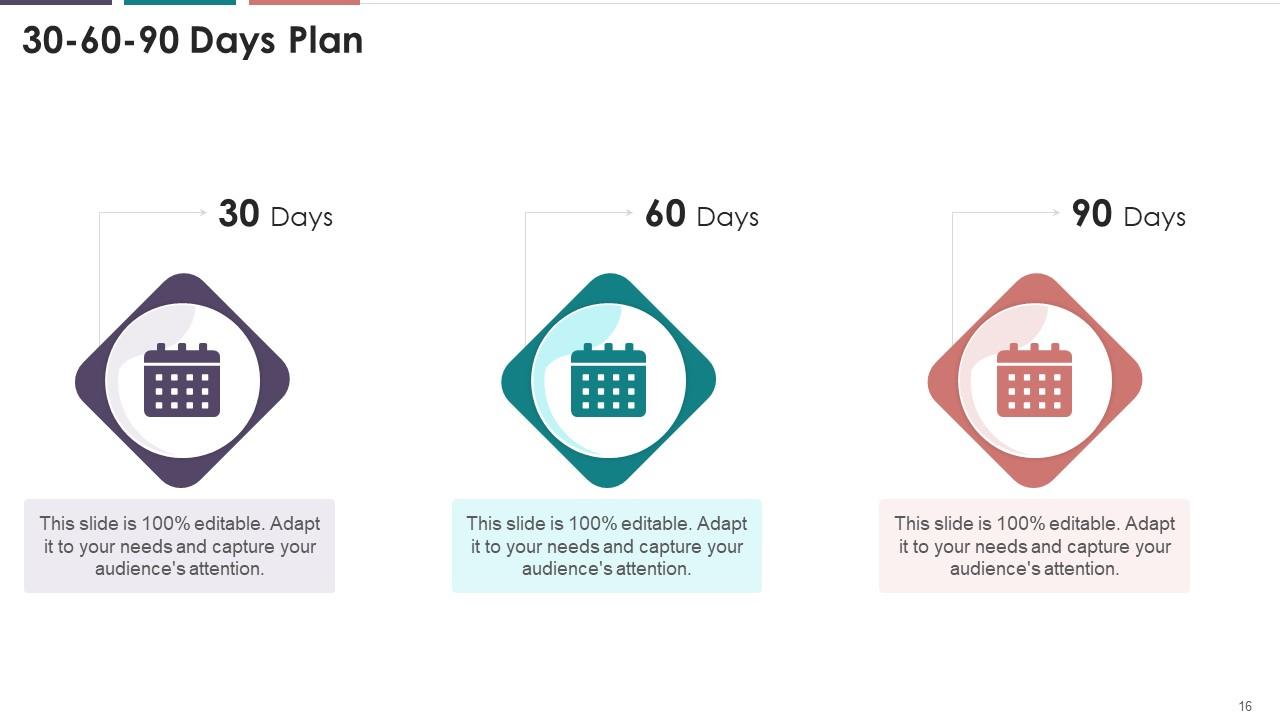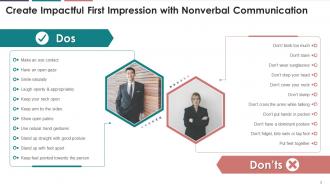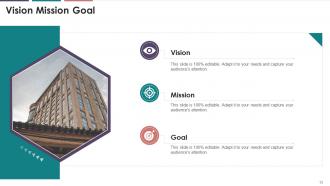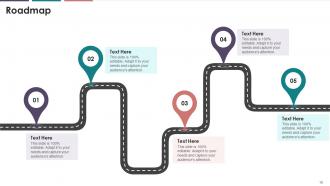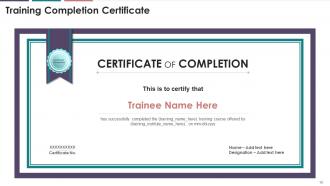Tips For Effective Nonverbal Communication Training Ppt
This set of slides covers recommendations to improve nonverbal communication. It includes multiple nonverbal communication barriers such as silence, paralanguage, inappropriate body language, and inappropriate facial expression, along with the techniques to overcome each barrier. It also includes information on creating an impactful first impression using nonverbal communication. Further, it covers mirroring, trust and rapport building, and negative body language in nonverbal communication.
This set of slides covers recommendations to improve nonverbal communication. It includes multiple nonverbal communication ..
- Google Slides is a new FREE Presentation software from Google.
- All our content is 100% compatible with Google Slides.
- Just download our designs, and upload them to Google Slides and they will work automatically.
- Amaze your audience with SlideTeam and Google Slides.
-
Want Changes to This PPT Slide? Check out our Presentation Design Services
- WideScreen Aspect ratio is becoming a very popular format. When you download this product, the downloaded ZIP will contain this product in both standard and widescreen format.
-

- Some older products that we have may only be in standard format, but they can easily be converted to widescreen.
- To do this, please open the SlideTeam product in Powerpoint, and go to
- Design ( On the top bar) -> Page Setup -> and select "On-screen Show (16:9)” in the drop down for "Slides Sized for".
- The slide or theme will change to widescreen, and all graphics will adjust automatically. You can similarly convert our content to any other desired screen aspect ratio.
Compatible With Google Slides

Get This In WideScreen
You must be logged in to download this presentation.
PowerPoint presentation slides
Presenting Tips for Effective Nonverbal Communication. This slide is well crafted and designed by our PowerPoint specialists. This PPT presentation is thoroughly researched by the experts, and every slide consists of appropriate content. You can add or delete the content as per your need.
People who downloaded this PowerPoint presentation also viewed the following :
Content of this Powerpoint Presentation
Slide 1
In this slide, multiple nonverbal communication barriers are listed, such as silence, paralanguage, inappropriate body language, and inappropriate facial expression. It also includes information regarding the techniques to overcome each barrier.
Slide 2
This slide illustrates information on a person can create an impactful first impression with nonverbal communication.
Slide 3
This slide illustrates the concept of mirroring for nonverbal communication. It also contains the techniques to improve mirroring using nonverbal cues such as build a connection, maintaining eye contact, nodding, and fronting.
Instructor’s Notes:
Techniques to improve mirroring using nonverbal cues are as follows:
Build A Connection:
- Facing the person while talking and giving them your full attention helps to build a better connection
Maintain Eye Contact:
- Eye contact is a powerful social cue to improve interpersonal interactions
- Maintain natural eye contact to let the other person know that you’re listening
Nodding:
- It is a great way to show that you’re paying complete attention
- While talking to someone, always smiling and nodding to make them feel that you are fully involved in the conversation
Fronting:
- Fronting means aiming our toes and top towards the person with whom we are communicating
When you face your entire body towards someone, they feel your engagement in creating a connection
Slide 4
This slide provides information regarding the tips to improve rapport and trust-building using nonverbal communication such as body posture and movements, eye contact, facial expression, and hand gestures
Instructor’s Notes:
Tips to build trust and rapport using nonverbal communication are as follows:
Posture:
- The posture will help a person to remain comfortable during conversation
- People who feel threatened by someone they are talking to tend to take a closed body posture
- During interaction with individuals, your body position should communicate confidence, openness, and attentiveness
- Body positions such as slouching or crossing your arms give the impression of low confidence that leads to a poor conversation
Eye Contact:
- Human beings like to have undivided attention while conversing with another person
- Maintaining friendly eye contact not only shows that a person is attentive and self-confident but is also a sign of how much value recipients in your opinion
Facial Expression:
- Facial expression speaks more than words
- People can easily judge others' responses through facial expressions
- Your expressions should match your conversation, or else the person would feel disconnected
Gestures:
- It is essential to maintain relaxed and sweeping movements with your hands
- It helps the person to remain calm and comfortable while interacting. Distracted, nervous, or pointed hand gestures can send the wrong message
Slide 5
This slide list down the multiple tips for nonverbal communication to make virtual meetings more impactful.
Instructor’s Notes:
Bring together the following nonverbal tips in the next virtual meeting to come across confident, attentive, and engaged.
- Always Maintain Eye Contact: Look directly into the webcam to give a perception of genuine eye contact
- Maintain Right Posture: Choose a chair that helps in sitting confidently upright without slouching. Also, try to keep shoulders square and lean slightly into the camera to mimic active listening on-screen
- Smile and Nod: Throughout the conversation, give nonverbal cues such as smiling, head nodding to reflect high engagement with the speaker
- Dress for Success: Always dress appropriately for virtual meetings. For meetings with top and middle management individuals, wear formal clothes, and for meetings with same-level associates, one can wear business causals
- Don't Touch Face: To minimize distractions avoid touching hair or face while you speak. Instead, use hands gestures alongside words to make an impact during the conversation
- Look at Ease: To make expression appear more natural, tape an image of a family member to the wall behind the online meeting setup
- Don't Cross Arms: Avoid crossing arms to create an unnecessary psychological barrier in online conversation
- Practice Breathing: Before starting and during the meeting, remember to breathe regularly to calm nerves
- Use Neutral Background: Set up a clean and uncluttered background to keep the audience focused on the message
- Resist the Urge to Search: When an online meeting is in progress, avoid an urge to search. Also, keep unnecessary notifications on devices off to avoid distractions
Slide 6
This slide depicts the information regarding negative body language in nonverbal communication. The toxic body language behavior highlighted are poor posture, crossed arms, overuse of hands, frowning, staring, finger pointing, avoidance of eye contact, becoming rigid, touching or fixing your hair, looking at watch, clock or phone, and space invasion.
Instructor’s Note:
The toxic body language behavior in nonverbal communication are
- Poor posture: Poor posture can indicate a lack of assertiveness or self-assurance. Poised people are treated with more respect and are perceived to be more knowledgeable and trustworthy
- Crossed arms: Folding your arms while speaking is inappropriate. It portrays a defensive posture, and the best way to avoid it is to practice holding your hands behind your back instead
- Overuse of hands: These signs can be found in someone who speaks rapidly while their hands flying all over the place. It determines whether a person is nervous
- Frowning: It is a clear indicator of sadness, sympathy, discontent, or anger. A wrinkle between the eyes or facial tightness can both indicate the same thing
- Staring: Too much eye contact can make one appear overly eager and result in an awkward exchange. The recipient of the eye contact will feel a sense of unease
- Finger pointing: People immediately perceive it as aggressive, and it frequently feels like a stab. While finger-pointers may choose to point at others to 'get their point across and provide direction, it comes across as difficult and problematic
- Avoidance of eye contact: Inability to make eye contact can indicate that a person is unsure of himself. This unease can be attributed to low self-esteem, lack of confidence, or fear of lying
- Becoming rigid: When we are nervous, many of us freeze. Our arms and legs stiffen, and it appears as if we have just seen a ghost. When it comes to client meetings and job interviews, becoming rigid or freezing up shows you cannot handle pressure
- Touching or fixing your hair: Assume you're in a meeting and you're constantly trying to fix your hair. It demonstrates that you are distracted and may even indicate that you are unsure about something
- Looking at watch, clock or phone: When people look at their phone, watch, or clock during a conversation, it is usually a sign that they are eager for it to end.
- Entering personal territory: Personal space invasion has a negative impact on business relationships. A good rule of thumb is never to get closer than 1.5 feet to a coworker and never treat a coworker's personal space as your own
Slide 7
This slide provides information regarding spotting nonverbal deception in business conversations.
Slide 8
This slide highlights a nonverbal communication meme. It can be used by trainer to add humor to the business communication training session.
Tips For Effective Nonverbal Communication Training Ppt with all 24 slides:
Use our Tips For Effective Nonverbal Communication Training Ppt to effectively help you save your valuable time. They are readymade to fit into any presentation structure.
-
One word for SlideTeam–Versatile!
-
Stunning collection! With a wide variety of options available, I was able to find a perfect slide for my presentation. Thank you, SlideTeam!


